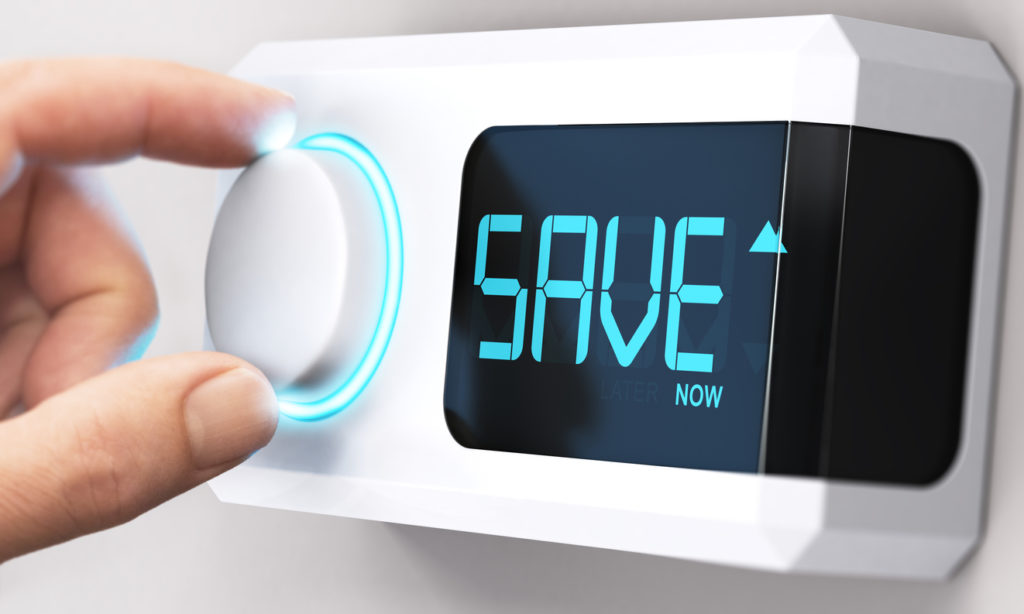During my time as Chief of Staff in the Danish Government, I was often met with slight surprise from visiting advisors and officials when I told them that energy efficiency is a key enabler of the green transition. Denmark is often hailed as a green frontrunner famous for our vast and growing renewables infrastructure.
Why would tiny Denmark with all the windmills spend valuable resources on demand side measures? In my view, that reaction is a symptom of a bigger issue. It seems as if decision makers somehow forgot that the greenest energy is the energy we don’t use. It is imperative to change this perception if we want to reach the targets in the Paris Agreement.
Some 26 years ago, Chancellor of Germany Dr. Helmut Kohl set the tone for the very first Conference of the Parties (COP1), by proclaiming energy efficiency to be a cost-effective and environmentally sensible measure for the simple reason that it allows us to supply more people with heat and electricity using the same quantity of resources. At the time, fossil fuels constituted 86% of the world’s primary energy consumption. Today it’s 84 % and back on the rise.
Since then, experts have doubled down on Kohl’s message. According to The International Energy Agency (IEA),energy efficiency must deliver more than 40% of the reduction in energy-related greenhouse gas emissions over the next 20 years to reach the goals set out in the Paris Agreement.


Yet, the IEA World Energy Outlook 2021 stressed that improvements in energy efficiency have not accelerated quickly enough. The authors state that if we are to reach net-zero in 2050, governments need to improve the global energy intensity by 35%. For that to happen, the energy intensity of the global economy must decrease by an annual 4% between 2020 and 2030–more than double the average rate of the previous decade.
Despite the efforts of experts, energy efficiency rarely finds itself at the top of the climate action agenda. For now, it seems that COP26 will also follow suit in this regard. Perhaps this can be explained by decision makers having grown immune to the early calls of Helmut Kohl? Or perhaps it’s a reflection of public opinion as seen in the UN’s climate survey of 1.2 million respondents, where “wasting less energy” did not even make the top 10 of most popular climate policies among high-income countries?.
The energy market volatility of the scale we are witnessing in Europe is detrimental to companies and households alike, potentially destabilizing the hard-won consensus on climate action. The soaring energy prices could be the reminder we need: It is not enough to increase spending on renewable power, we also need to ramp up efforts on improving energy efficiency if we are to curtail global energy demand.
Time is of the essence. Consider the building sector’s future growth. The global building stock-floor area is set to expand by the equivalent size of New York City, every month, for the next 40 years. Every new square meter emits greenhouse gas emissions when it is constructed, heated, cooled or even equipped with white appliances and devices. Today, buildings account for 38% of the world’s energy-related emissions. If we are to turn the tide on this development, every square meter of new floor space must consume less energy. That requires taking action wherever we can.
Just using simple thermostatic radiator valves in all households in Europe could save us 29 million tons of CO2. While, at the same time, the reduced energy bills would save EU citizens €12 billion.
We could also equip our buildings with smart systems – a “central nervous system,” if you will, that links the buildings’ thermostats, heat pumps and air conditioning – as well as any other cooling and heating appliances– to digital devices that optimize energy consumption. This solution in itself could reduce CO2-emissions in Europe by 156 million tons – the equivalent emissions produced by82 million cars.
Critical action can also be taken in the industrial, transport, and agricultural sectors.
For instance, fitting all electric motors with variable-speed drives to better optimize the motor’s efficiency would lead to a global demand reduction for electricity of8%–corresponding to the combined demand for electricity in India and France.
Additionally, we’re able to replace the internal combustion engine with batteries and power modules–the gearbox of the future. The same logic regarding electrification can also be applied to maritime transport, where battery-powered ferries are already providing us with a glimpse into the future.
Energy efficiency also presents itself as an opportunity to help solving other issues in this world. For instance, proper cooling facilities in the supply chain in developing countries can reduce food waste, and its associated emissions, by up to 40% while ensuring that more food reach the consumer rather than going to waste
These are big numbers, but I could go on because there is huge energy saving potential across the entire economy. Put simply, we are currently not using our energy wisely, resulting in massive waste and elevated costs for families and companies. It doesn’t have to be this way; however, it demands courage and attention from policy makers to help us make the necessary changes. COP26 could be the turning point.
Denmark, the renewables pioneer, has suggested for the EU to commit to improve energy efficiency by 40% in 2030.COP26 is the perfect occasion to take on this commitment in all countries. The time of talk is over. The ambition is clear. Now comes the time to act.
By Martin Rossen, former Chief of staff at the Danish Prime Minister’s Office, Senior Vice President, Head of Global Communication and Sustainability, Danfoss A/S












